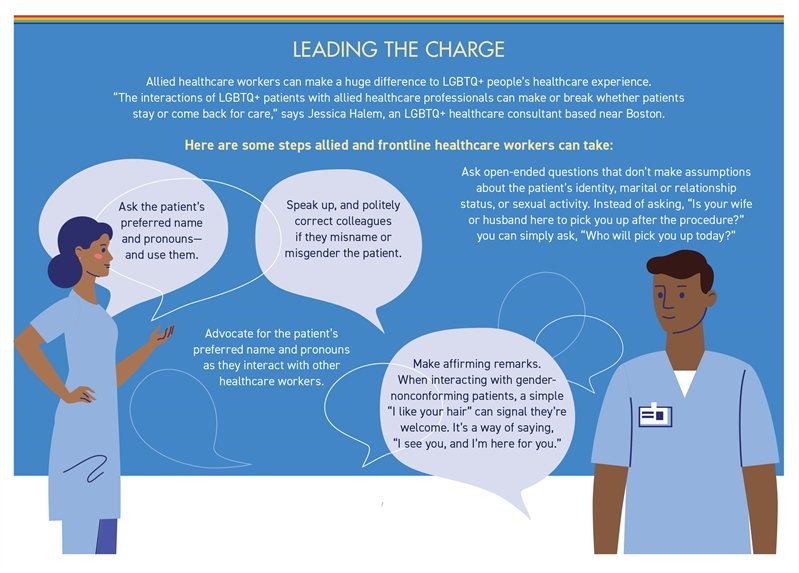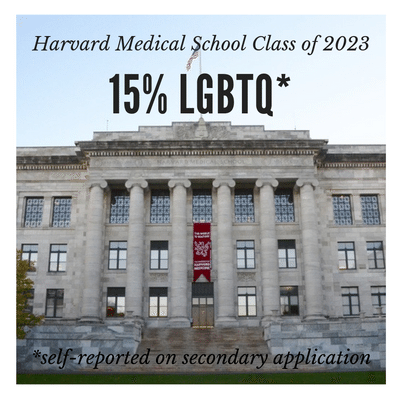It is time for business leaders to stand up for transgender and nonbinary youth.
Co-authored by Jessica Halem and Colin Quinn. March 21st, 2023
The first gender affirming surgery was done 100 years ago. The American Psychiatric Association resolved that homosexuality was not a mental illness 50 years ago. Both watershed moments happened because patients advocated for themselves and medicine adapted. We’re doing it again today.
Now and for the past seven years, many in healthcare have been working to enforce the intent of the historic ruling in the summer of 2016. That’s when the Office for Civil Rights of the United States Department of Health and Human Services issued Section 1557 of the Affordable Care Act prohibiting discrimination in healthcare settings. The Obama and Biden Administrations have since affirmed that the rule includes sexual orientation and gender identity.
The intent of Section 1557 is not only to ensure the (passive) absence of discrimination in our industry but also the (active) inclusion of safe, accessible, and appropriate healthcare for all people, including gay, lesbian, bisexual, and transgender patients. But right now best practices in medical care for LGBTQ+ people, specifically those who are transgender and nonbinary are being rolled back in a multi-front, coordinated attack in some locations. We have to see this attack clearly, and fight it soundly.
In total, 315 anti-LGBTQ bills were introduced in state legislatures in the United States in 2022. Of those bills, 29 were signed into law. This year, the numbers are growing and attacks are unrelenting: 420 anti-LGBTQ+ bills have already been proposed this year alone. (Read more in the February 2023 report from Movement Advancement Project (MAP), an independent, nonprofit think tank.) Every time there’s a new headline, concerned and supportive providers, payors, schools, and HR & benefits professionals ask what they can do to ensure quality healthcare is uninterrupted? They want to move forward, not back.
The promising news is that medical research is on their side. Medically necessary care for adults and youth who are transgender and gender-diverse has been researched and endorsed by the American Academy of Pediatrics, American Psychological Association, and the American Medical Association. These experts – and many more – have spent years putting together a body of work to guide us. We hope everyone will take the time to read from these trusted sources.
And, as members of the LGBTQ+ community, and as healthcare leaders, we are here to maximize healthcare access for all, support the understanding of the latest clinical guidelines, share best practices for coverage and patient care, and develop services to navigate people to the care they need when they need it. Debate may continue, but three things must happen.
First, the medical experts and community should guide this conversation. They should lead clinical and policy decisions regarding patient care and overall health and wellness. After all, decisions to be made about medical care involve two people: the medical professional and the patient. There are two seats at the table. We can strengthen the conversation that happens there, making sure it’s informed with data, research, and led by providers who are equipped with appropriate training. But those seats belong to patient and medical professional, not politicians.
Second, transgender medicine must continue to advance, with investment in medical research, data, and clinical training. The medical community reports that providers are woefully underprepared. We have to increase the number of providers in every state who are trained on protocols and best practices like those offered by the The World Professional Association for Transgender Health, to provide high quality, accurate, and affirming care.
Third, employers, people leaders, and organizations can and should play an active role, so employees feel seen and supported, and have access to the benefits they deserve. How, exactly? Businesses can shore up their LGBTQ+ community, while we continue to make the winning arguments to stop these bills, which are uninformed by medical evidence. (We have precedent on our side: 91% of Anti-LGBTQ+ bills proposed failed in 2022 and 24 pro-equality bills were passed). Some ideas:
Strengthen or start an LGBTQ+ Employee Resource Group (ERG), and support programming that reaches families with kids who are LGBTQ+.
Be an Ally. Send a message on March 31st for International Transgender Day of Visibility. A short, positive, company-wide email and social media post, like: “This company stands with our transgender and nonbinary employees, their families, and our customers.”
Conduct a quick benefits equity assessment to ensure your benefits are inclusive and everyone knows how to use them. Review and revamp Benefits’ Travel Policies so members can take advantage of them as needed, especially now.
Contact local and state government officials to express your company’s support for LGBTQ+ people of all ages. Remind them to follow the evidence and medical research from trusted sources.
Do more in your industry. Ask yourself: What can your business and peer businesses uniquely do to champion the rights of all people to express the full range of diversity of gender, families, and relationships?
Bottom line: Every American deserves access to safe, high-quality, affirming healthcare - and a workplace that ensures it. If business leaders respect the wisdom of patients and the expertise of medical professionals, they’ll get it.
Author Biographies:
Colin Quinn serves as the President of Included Health Communities at Included Health. As a member of the LGBTQ+ community, he understands firsthand the challenges members of the LGBTQ+ community face navigating the healthcare system. He is passionate about raising care equity for underserved patient populations. He received his undergraduate degree in Finance at Butler University and has an MBA from Stanford’s Graduate School of Business
Jessica Halem, MBA, has worked for over two decades in the LGBTQ+ health equity space as the Executive Director of the Lesbian Community Cancer Project in Chicago; the LGBTQ+ Director at Harvard Medical School; Board of Directors of the Tegan and Sara Foundation; and now as the Senior Director of Eidos, the LGBTQ+ Health Initiative at University of Pennsylvania.











